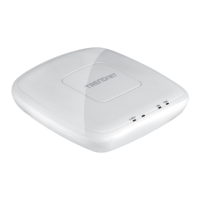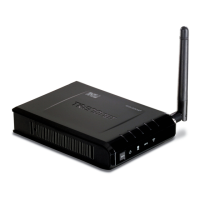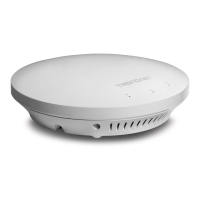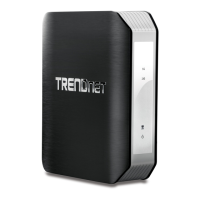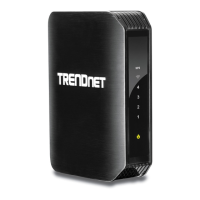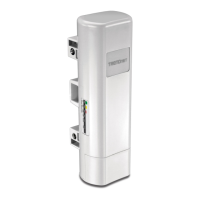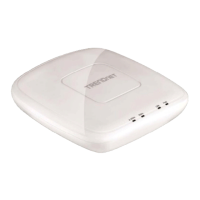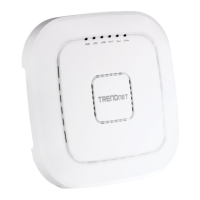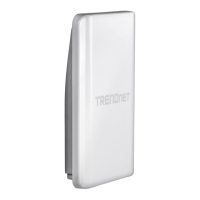© Copyright 2014 TRENDnet. All Rights Reserved.
16
TRENDnet User’s Guide
TEW-815DAP
20/40MHz (Auto) (Options: 20MHz or 20/40MHz (Auto)). It is recommended to use
the default channel bandwidth settings.
Note: Please note that this setting may provide more stability than the higher
channel bandwidth settings such as 20/40MHz (Auto) for connectivity in busy
wireless environments where there are several wireless networks in the area.
o 20 MHz: This mode operates using a single 20MHz channel for wireless devices
connecting at 802.11n on both 2.4GHz and 5GHz. This setting may provide more
stability than 20/40MHz (Auto) for connectivity in busy wireless environments
where there are several neighboring wireless networks in the area.
o 40MHz: When 40MHz is active, this mode is capable of providing higher
performance only if the wireless devices support the channel bandwidth settings.
Enabling 40MHz typically results in substantial performance increases when
connecting an 802.11n client.
• MCS: dfshgjhkjjg
o
o Frequency: Click the drop-down Schedule – The schedule function allows you to
Repeat these steps 2-7 to configure the additional SSIDs.
Note: To verify that the multiple SSIDs are active, using a wireless device, scan for
available wireless networks and check if the wireless device is able to discover the SSIDs.
To check connectivity, using a wireless device, connect to these SSIDs using the wireless
security types you have configured.
Advanced wireless settings
Wireless > Advanced
These settings are advanced options that can be configured to change advanced
wireless broadcast specifications. It is recommended that these settings remain set to
their default values unless you are knowledgeable about the effects of changing these
values. Changing these settings incorrectly can degrade performance.
• Beacon Interval: A beacon is a management frame used in wireless networks that
transmitted periodically to announce the presence and provide information about
the access point’s wireless network. The interval is the amount time between each
beacon transmission.
Default Value: 100 milliseconds (range: 20-1000)
• DTIM: A DTIM is a countdown informing clients of the next window for listening to
broadcast and multicast messages. When the wireless Access Point has buffered
broadcast or multicast messages for associated clients, it sends the next DTIM with
a DTIM Interval value. Wireless clients detect the beacons and awaken to receive
the broadcast and multicast messages. The default value is 1. Valid settings are
between 1 and 255.
• Fragmentation Threshold: Wireless frames can be divided into smaller units
(fragments) to improve performance in the presence of RF interference and at the
limits of RF coverage. Fragmentation will occur when frame size in bytes is greater
than the Fragmentation Threshold. This setting should remain at its default value of
2346 bytes. Setting the Fragmentation value too low may result in poor
performance.
• RTS Threshold: When an excessive number of wireless packet collisions are
occurring, wireless performance can be improved by using the RTS/CTS (Request to
Send/Clear to Send) handshake protocol. The wireless transmitter will begin to send

